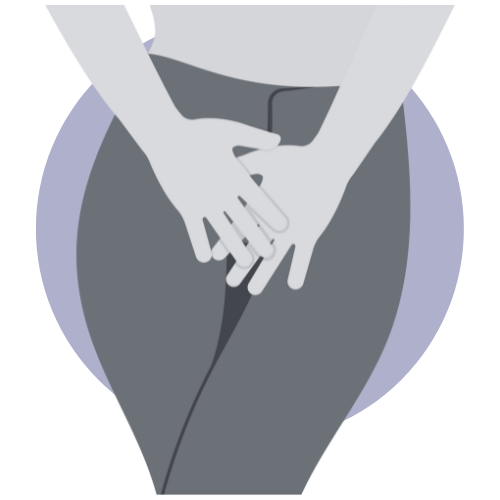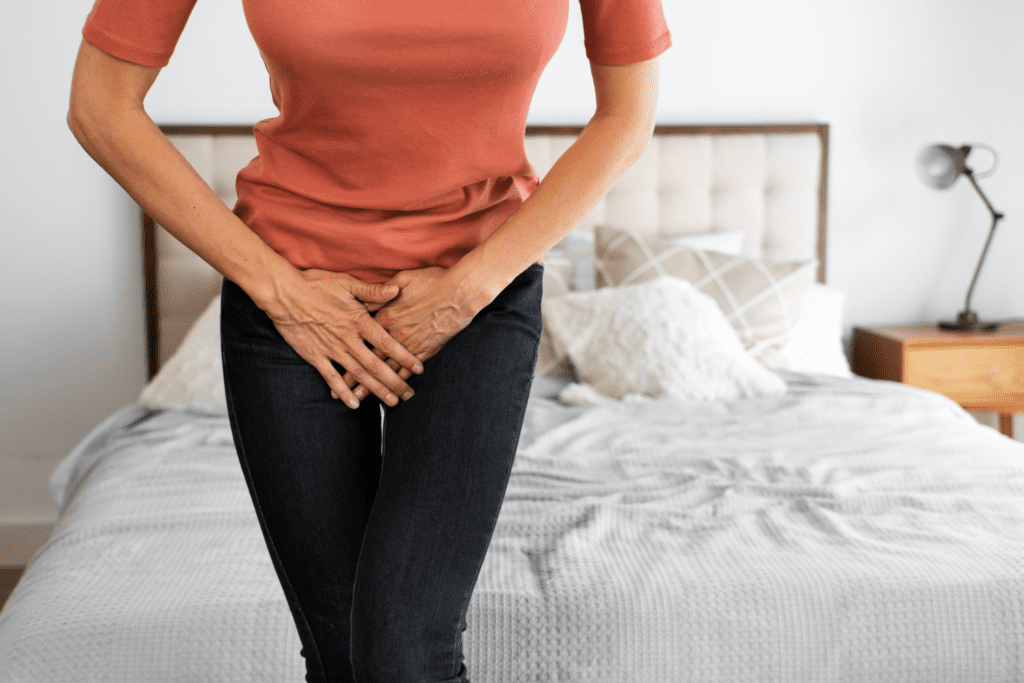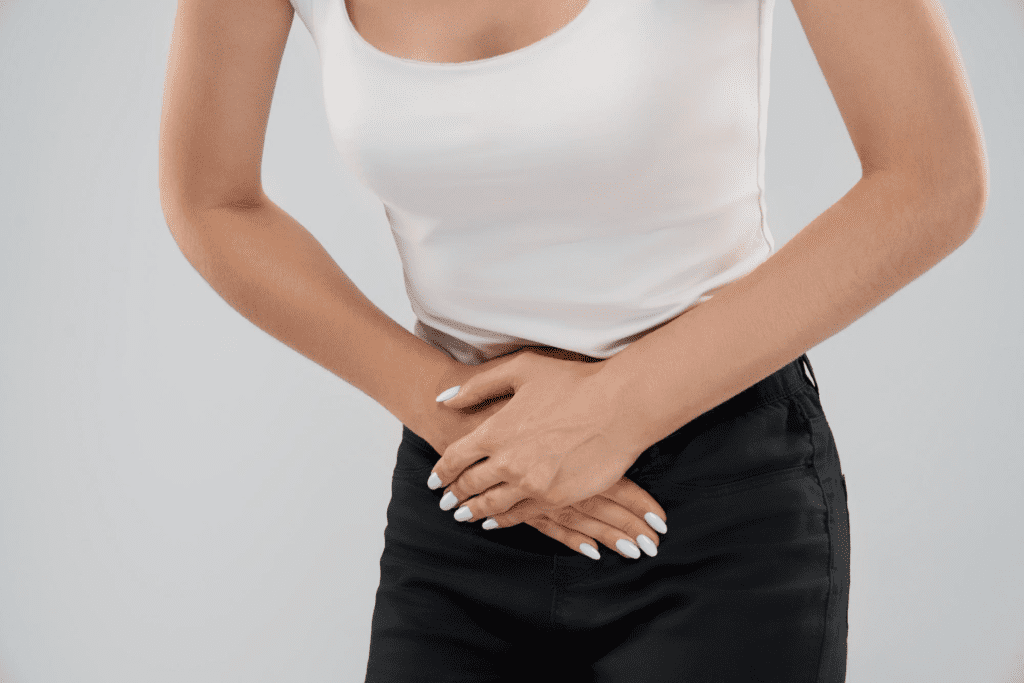Incontinence Dallas

Symptoms of Incontinence
Understanding the symptoms of urinary incontinence is the first step towards reclaiming control of your life. At Innovative Therapy PC in Dallas, we encounter numerous clients who are facing various manifestations of this condition.
Some prevalent symptoms include:
- Sudden Urge: This is characterized by a sudden, intense need to urinate, often followed by an involuntary loss of urine.
- Frequency: If you find yourself heading to the restroom much more frequently than usual, it might indicate a problem.
- Nocturnal Episodes: Experiencing involuntary urine loss during sleep or bed-wetting.
- Post-urination Dribble: A dribble or trickle of urine immediately after urinating suggests incomplete bladder emptying.
Our professionals at Innovative Therapy PC emphasize early recognition of these symptoms, allowing for prompt and effective intervention.
What Causes Incontinence?
Urinary incontinence isn’t arbitrary; specific factors and conditions might make you more susceptible. At Innovative Therapy PC, we believe in not just treating the symptoms but also understanding the root cause.
Common causes include:
- Aging: Over time, the bladder muscles might lose some of their strength, reducing its urine-holding capacity.
- Pregnancy & Childbirth: The physical stress and changes from childbirth can lead to weakened bladder control muscles.
- Medical Conditions: Issues like a urinary tract infection or constipation can cause temporary incontinence.
- Neurological Disorders: Conditions like Multiple Sclerosis, Parkinson’s Disease, or spinal cord injuries can disrupt nerve signals involved in bladder control.
Being informed about what causes incontinence can empower you to seek timely assistance, and there’s no better place in Dallas to do that than Innovative Therapy PC.
Incontinence can be embarrassing and hard to talk about, but we are great listeners.
Let’s work together to figure out what type of incontinence you have and how to re-train the muscles to work as a team again.
Kegel’s contractions are not the answer as the integration of the pelvic floor muscles with the abdominal muscles, hip muscles, and all the other body parts, especially the brain can set you free once again.
Types of Female Urinary Incontinence
Focusing on female urinary incontinence, there are several specific types that women might experience. Recognizing these can lead to more targeted treatments.
At Innovative Therapy PC, we specialize in diagnosing and addressing each type:
- Stress Incontinence: Triggered by coughing, sneezing, laughing, or any activity that puts pressure on the bladder.
- Urge Incontinence: Often referred to as “overactive bladder,” this is characterized by a strong, sudden need to urinate.
- Overflow Incontinence: This is when the bladder doesn’t empty fully, leading to dribbling.
- Functional Incontinence: Physical or mental conditions prevent one from reaching the restroom in time.
For Dallas residents grappling with these concerns, Innovative Therapy PC is committed to offering a comprehensive range of treatments and support for female urinary incontinence. Remember, recognizing the type can often be half the battle.
Diagnosis of Incontinence At Dallas
Before diving into treatment, it’s vital to obtain a correct diagnosis. At Innovative Therapy PC in Dallas, we adopt a thorough and patient-centric approach to diagnosing incontinence.
The process includes:
- Medical History Evaluation: Understanding your medical history, including any medications, past surgeries, and overall health, helps paint a clearer picture.
- Bladder Diary: Sometimes, patients are asked to maintain a record of their urination habits, any leaks, and what they were doing when the leak happened.
- Physical Examination: This involves checking for any signs of medical conditions causing the incontinence.
- Urine Test: A simple test can check for infections or other conditions.
- Bladder Function Test: This measures how much your bladder can hold and at what point you feel the urge to urinate.
Our dedicated team at Innovative Therapy PC is equipped with state-of-the-art tools and expertise, ensuring accurate diagnosis and personalized care.
Incontinence Dallas, TX
Regain control and confidence with our effective incontinence treatments in Dallas, TX.


Bladder Control Treatment Options in Dallas, TX
At Innovative Therapy PC, we understand the sensitivity of bladder issues and the importance of regaining control.
Tailoring treatments to individual needs is paramount. Here’s a breakdown of the primary treatment avenues:
Non-Surgical Bladder Control Treatments
Non-surgical interventions are often the first line of treatment.
These methods are less invasive and can be highly effective:
- Bladder Training: This involves scheduled trips to the restroom and gradually increasing the time between visits to train your bladder.
- Pelvic Floor Muscle Exercises: Often known as Kegel exercises, these strengthen the muscles that help control urination.
- Medication: Certain medicines can help the bladder empty more fully during urination or relax bladder muscles.
- Physical Therapy: This can improve muscle strength and urinary control.
Trust in Innovative Therapy PC’s holistic approach, which involves combining these non-surgical treatments for maximum efficacy.
Surgical Bladder Control Treatments
For those who don’t find relief from non-surgical methods, surgery might be a viable option:
- Sling Procedures: A sling, made of synthetic material or tissue, is used to lift the urethra into a normal position.
- Bladder Neck Suspension: This aims to provide support to the urethra and bladder neck – an area of thickened muscle.
- Prolapse Surgery: If incontinence is related to pelvic organ prolapse, surgery might be recommended.
- Artificial Urinary Sphincter: Recommended mostly for men, a small ring is implanted to keep the urethra closed.
Innovative Therapy PC boasts a team of surgical experts in Dallas who are committed to helping patients regain their quality of life through state-of-the-art surgical options.
Whatever your needs, we’re here to guide and support you every step of the way.
Incontinence Dallas, TX
Regain control and confidence with our effective incontinence treatments in Dallas, TX.


Why Choose Innovative Therapy PC?
When it comes to handling conditions as sensitive and potentially life-altering as incontinence, you need a partner you can trust. Here’s why Innovative Therapy PC stands out in Dallas:
- Expertise & Experience: With years of dedication to treating conditions like incontinence, our team has garnered unparalleled expertise, ensuring you’re in capable hands.
- Personalized Approach: We understand that each patient is unique. Hence, our treatments are tailored to meet individual needs, ensuring optimal results.
- Holistic Treatment Options: From non-surgical methods to advanced surgical interventions, we offer a broad spectrum of treatments.
- State-of-the-Art Facilities: Our clinic in Dallas is equipped with the latest diagnostic and treatment tools, ensuring our patients receive the best care possible.
- Compassionate Care: Beyond our professional expertise, our team is deeply committed to offering compassionate, empathetic care. At Innovative Therapy PC, you’re more than just a patient; you’re family.
So, if you’re in Dallas and seeking unparalleled care for incontinence or related concerns, reach out to us at (214) 225-8530 or drop us an email at [email protected].
Let’s embark on your journey to a better, confident life together.
Incontinence Dallas, TX
Regain control and confidence with our effective incontinence treatments in Dallas, TX.
“No one wants to talk about but there are things we can do about it.”
Physical therapy for stress incontinence can help to improve muscle tone and control, which can in turn lead to significant symptom relief. In addition, physical therapy can help to increase awareness of the pelvic floor muscles, making it easier to tense them during activities that may trigger incontinence episodes.
Overactive bladder is a condition that can cause pain and inflammation. Physical therapy can help to reduce pain and inflammation, and it can also help to improve your range of motion and strength. Exercises that stretch and strengthen the muscles around the bladder can be especially helpful in alleviating pain.
Mixed incontinence is a condition that can cause pain and inflammation. Physical therapy can help to reduce pain and inflammation, and it can also help to improve your range of motion and strength. Exercises that stretch and strengthen the muscles around the bladder can be especially helpful in alleviating pain.
Overflow incontinence is a condition that can cause pain and inflammation. Physical therapy can help to reduce pain and inflammation, and it can also help to improve your range of motion and strength. Exercises that stretch and strengthen the muscles around the bladder can be especially helpful in alleviating pain.
Functional incontinence is a condition that can cause pain and inflammation. Physical therapy can help to reduce pain and inflammation, and it can also help to improve your range of motion and strength. Exercises that stretch and strengthen the muscles around the bladder can be especially helpful in alleviating pain.
Reflex incontinence is a condition that can cause pain and inflammation. Physical therapy can help to reduce pain and inflammation, and it can also help to improve your range of motion and strength. Exercises that stretch and strengthen the muscles around the bladder can be especially helpful in alleviating pain.
Urge incontinence is a condition that can cause pain and inflammation. Physical therapy can help to reduce pain and inflammation, and it can also help to improve your range of motion and strength. Exercises that stretch and strengthen the muscles around the bladder can be especially helpful in alleviating pain.
Incontinence Ailments That I Treat
FAQs About Incontinence
Can urinary incontinence be cured?
Absolutely. The potential for curing urinary incontinence largely depends on its cause. Many individuals find complete relief through tailored treatments. In contrast, others see a significant reduction in the severity and frequency of their symptoms.
Early diagnosis and intervention often increase the chances of a complete cure.
At Innovative Therapy PC, we’re dedicated to providing the best strategies and solutions to address and potentially cure your incontinence concerns.
When will I see results after Innovative Therapy PC treatment?
The timeline for results varies based on the type of treatment and the individual’s specific condition. Some patients notice improvements within weeks of starting non-surgical treatments like bladder training or pelvic floor exercises.
Surgical interventions might have a longer recovery time but often yield more immediate results once healing is complete.
Our team at Innovative Therapy PC is committed to tracking your progress and ensuring you’re on the fastest route to relief.
How many Innovative Therapy PC treatments will I need?
This is contingent on the nature and severity of your incontinence. Non-surgical treatments like physical therapy might require regular sessions over several weeks or months, while surgical treatments are typically a one-time procedure followed by post-operative care.
Our goal at Innovative Therapy PC is to offer the most effective treatment regimen with the fewest necessary interventions.
During your consultation, our specialists will provide a clearer picture tailored to your unique situation.
Where is incontinence located?
Incontinence isn’t about a physical location but rather a physiological condition. It refers to the involuntary loss of urine from the bladder or feces from the bowel, impacting one’s control over urination or defecation.
The issue stems from the pelvic region, specifically the bladder and urethra, in the case of urinary incontinence.
The root causes can be linked to muscle weakness, nerve damage, or other medical conditions affecting this region.
At Innovative Therapy PC, we focus on a comprehensive understanding and diagnosis to pinpoint the underlying issues leading to incontinence.
What are the 4 types of incontinence?
Incontinence is a multifaceted condition with different types. While we’ve touched on these before, let’s categorize the main types:
- Stress Incontinence: This happens when pressure or “stress” on the bladder leads to unintentional urine leakage. Activities like coughing, sneezing, laughing, or heavy lifting can trigger it.
- Urge Incontinence: Also known as “overactive bladder,” it’s characterized by a sudden, intense urge to urinate, followed by involuntary urine loss.
- Overflow Incontinence: This occurs when the bladder isn’t emptied, leading to frequent or constant dribbling of urine.
- Functional Incontinence: A result of a physical or mental obstacle preventing one from getting to the toilet in time.
Our professionals at Innovative Therapy PC in Dallas are adept at identifying and treating all these types, ensuring you get the care tailored to your specific needs.
Incontinence Dallas, TX
Regain control and confidence with our effective incontinence treatments in Dallas, TX.

